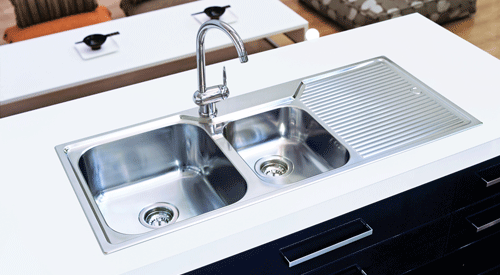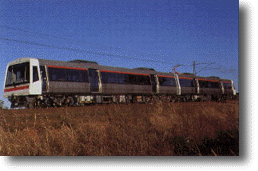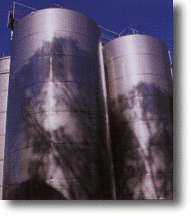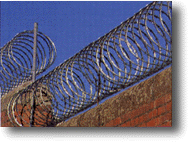Stainless steels have diverse properties which provide viable and cost-effective solutions to a vast range of applications. In practice, development of a hierarchy of required properties reduces the range to a manageable number of highly versatile materials (ASSDA's Reference Manual lists about 30 grades commonly available in Australia), enabling users to choose the most appropriate grade for the particular application.
The family of stainless steels can be divided into five basic alloy groups (see Table 1):
|
Table 1: Family of Stainless Steels |
||||||
| Alloy Group |
Common Grades |
|||||
|
Austenitic |
UNS No. | S30100 | S30400 | S3403 | S31600 | S31603 |
| Commonly | 301 | 304 | 304L | 316 | 316L | |
| UNS No. | S32100 | S31000 | S30815 | N08904 | S31254 | |
| Commonly | 321 | 310 | 253MATM or 2111HTRTM |
904L | 254SMOé | |
|
Ferritic |
UNS No. | S40900 | S43000 |
* |
S44400 | S44600 |
| Commonly | 409 | 430 | DIN 1.4003 3CR12TM or 5CR12TM |
444 | 446 | |
|
Martensitic |
UNS No. | S41000 | S42000 | S43100 | S44004 | |
| Commonly | 410 | 420 | 431 | 440C | ||
|
Duplex |
UNS No. | S32304 | S31803 | S32750 | S32550 | S32760 |
| Commonly | 2304 | 2205 | 2507 | Ferrallium 255TM |
Zeron 100TM | |
|
Precipitation |
UNS No. | S17400 | S17700 | S15500 | ||
| Commonly | 17-4PH or 630 |
17-7PH or 631 |
15-5PH | |||
|
* UNS No. not yet allocated |
||||||
Grade S30400 Stainless Steel 
S30400 is the most specified grade - it accounts for more than 50% of stainless steel produced in the world and services a wide range of applications. It withstands ordinary rusting in architecture, is resistant to most food processing environments, and resists organic chemicals, dye stuffs and a wide variety of inorganic chemicals. It is used extensively in consumer products and appliances, and equipment for domestic and commercial kitchens, hospitals, transportation and waste water treatment. S30400 is also available in virtually all product forms and finishes.
When selecting a stainless steel, first consider the fundamental "competitive advantage" properties required. These basic properties can initially be viewed according to the five basic alloy groups (see Table 2 below).
| Required property examples | Preferred alloy groups and grades |
| Corrosion resistance | Selection depends largely upon environment |
| Heat resistance |
|
| Cryogenic (low temperature) resistance | Austenitic grades |
| Low magnetic response | Austenitic grades, especially higher Ni grades, e.g. S31600 or S31000 |
| High strength | Martensitic and precipitation hardening grades |
For corrosive environments, take advantage of past experience. Even small amounts of some impurities and/or changes in temperature of flow conditions can have a significant effect on corrosion resistance. Specialist suppliers and other independent experts, who often provide advice at no cost, are contactable through ASSDA for assistance with a recommendation.
 For resistance to environments such as strong acids, where uniform general corrosion is the controlling mechanism, refer to published tables of recommended grades and iso-corrosion curves (usually comparing several grades) that indicate the rate at which the stainless can be expected to corrode. It is again stressed that minor differences between apparently similar environments, e.g. presence of chloride, can significantly alter the corrosion rates. Local corrosion, such as the related mechanisms of pitting and crevice corrosion, is largely controlled by the presence of chlorides in the environment and exacerbated by elevated temperature and surface deposits. Keeping a stainless steel surface clean is an important way of minimising corrosion. Surface roughness can also help in initiating corrosion, so the smoother the surface, the better. A grade's resistance to pitting and crevice corrosion is indicated by its Pitting Resistance Equivalent number (PRE = %Cr + [3.3 x %Mo] + [16 x %N]) (see Table 3 below).
For resistance to environments such as strong acids, where uniform general corrosion is the controlling mechanism, refer to published tables of recommended grades and iso-corrosion curves (usually comparing several grades) that indicate the rate at which the stainless can be expected to corrode. It is again stressed that minor differences between apparently similar environments, e.g. presence of chloride, can significantly alter the corrosion rates. Local corrosion, such as the related mechanisms of pitting and crevice corrosion, is largely controlled by the presence of chlorides in the environment and exacerbated by elevated temperature and surface deposits. Keeping a stainless steel surface clean is an important way of minimising corrosion. Surface roughness can also help in initiating corrosion, so the smoother the surface, the better. A grade's resistance to pitting and crevice corrosion is indicated by its Pitting Resistance Equivalent number (PRE = %Cr + [3.3 x %Mo] + [16 x %N]) (see Table 3 below).
| Grade | Alloy Group | PRE |
| DIN 1.4003 | Ferritic | 11 |
| S43000 | Ferritic | 17 |
| S30403 | Austenitic | 18 |
| S31603 | Austenitic | 24 |
| S31803 | Duplex | 34 |
| N08904 | Austenitic | 34 |
| S31254 | Austenitic | 43 |
| S32750 | Duplex | 43 |
| S32760 | Duplex | 41* |
*Calculated PRE omits the inclusion of tungsten, which improves S32760's pitting resistance.
Grades with high levels of each element are more resistant. Hence, S31600 (2% Mo) is standard for marine fittings. Grade S31803 (3% Mo and 0.15% N) is more resistant to higher temperature chloride environments and the "super duplex" (eg S32750 and S32760) and "super austenitic" (e.g. S31254) grades have very high levels of each element and can withstand high chloride environments up to nearly boiling point.
Common austenitic grades (e.g. S30400 and S31600) may suffer from stress corrosion cracking (SCC) in chloride-containing environments, particularly in temperatures above about 50C and when a tensile stress is present in the steel. The ferritic and duplex grades are highly resistant, though not immune, and should be selected if SCC is a possibility.
Selection for Mechanical and Physical Properties
Martensitic (e.g. S43100) and precipitation hardening (eg S17400) grades are often preferred materials for products requiring high strength, e.g. shafts and valve spindles.
Often, a grade is selected for the required corrosion resistance, and the mechanical and physical properties of the grade are only considered in the subsequent design process. However, these properties are fundamental and should be considered as early as possible in the selection process. For example, while a duplex grade like S31803 is highly corrosion resistant, it may also be more cost-effective in the long term for a given application due to its high strength.
Selection for Fabricability
Fabricability should be considered early in the grade selection process - it greatly influences the cost of the product. Table 4 below lists some common grades and compares their relative fabricability on a scale of 1 to 10, with 10 indicating excellent fabricability by this method:
| Grade | Formability | Machinability | Weldability |
| S30300 | 1 | 8* | 1 |
| S30400 | 8 | 5* | 8 |
| S31600 | 8 | 5* | 8 |
| S41600 | 1 | 10 | 1 |
| S43000 | 4 | 6 | 2 |
| S31803 | 5 | 4 | 5 |
| DIN 1.4003 | 5 | 6 | 6 |
*Improved versions of these grades offer higher machinabilities in some products.
A compromise between desirable properties of certain grades may be necessary. For example, grade S30300 (austenitic steel known as 303) has excellent machinability, but the high sulphur content which dramatically increases the cutting speed also substantially reduces the grade's weldability, formability and corrosion resistance (its PRE is wrong because the negative effect of sulphur is omitted, making it totally inappropriate for applications where there is a likelihood of corrosive conditions of even a mild nature).
Conclusion
Before selecting a grade of stainless steel, it is essential to consider the required properties such as corrosion resistance, but it is also important to consider the secondary qualities such as physical and mechanical properties and fabricability of any competing grade. The appropriate choice will ultimately provide both short- and long-term benefits: cost-effective fabrication and installation and a long, trouble-free life.
 Specifiers of stainless steel can obtain experienced help from independent and supplier/fabricator sources, often at no cost. Corrosion performance, physical and mechanical properties, surface finishes and a range of information comparing stainless steels are available in ASSDA's Reference Manual. Call ASSDA for the right help for your needs.
Specifiers of stainless steel can obtain experienced help from independent and supplier/fabricator sources, often at no cost. Corrosion performance, physical and mechanical properties, surface finishes and a range of information comparing stainless steels are available in ASSDA's Reference Manual. Call ASSDA for the right help for your needs.
References
ASM International (1989) Corrosion Data.
ASM International (1994) ASM Specialty Handbook - Stainless Steels.
Sedriks, A.J. (1996) Corrosion of Stainless Steels. John Wiley & Sons.